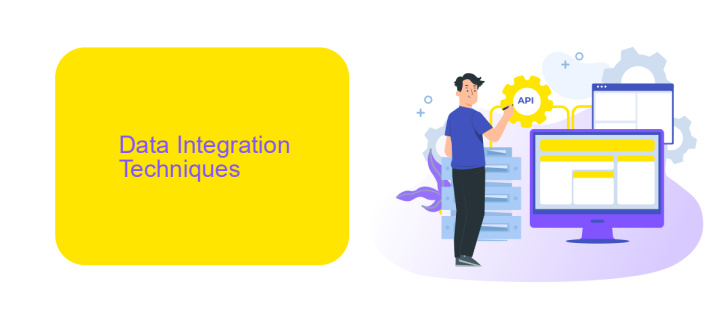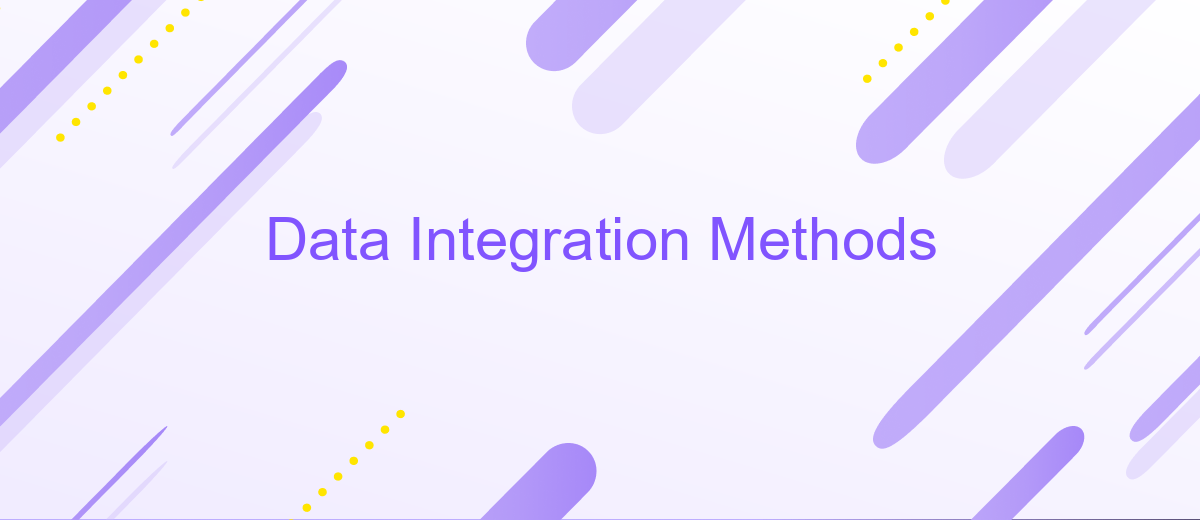Data Integration Methods
Data integration is a crucial process in modern data management, enabling seamless access and analysis of information from diverse sources. This article explores various data integration methods, highlighting their significance in enhancing data quality and consistency. By understanding these techniques, organizations can better leverage their data assets to drive informed decision-making and maintain a competitive edge in today's data-driven world.
Introduction
Data integration is a critical process in modern businesses, enabling seamless connectivity between disparate systems and data sources. It ensures that data from various origins can be consolidated, accessed, and utilized efficiently, thereby driving informed decision-making and operational efficiency.
- ETL (Extract, Transform, Load): A traditional method that extracts data from multiple sources, transforms it into a suitable format, and loads it into a target database or data warehouse.
- Data Virtualization: Allows real-time data access without the need for physical data movement, providing a unified view of data from multiple sources.
- API-Based Integration: Utilizes APIs to enable direct communication between systems, facilitating real-time data exchange and integration.
One effective service for API-based integration is ApiX-Drive, which simplifies the setup of integrations between various applications and services. By leveraging such tools, businesses can automate data flows, reduce manual intervention, and enhance the reliability of their data integration processes.
Data Integration Techniques

Data integration techniques are essential for merging information from various sources into a unified view. One common approach is ETL (Extract, Transform, Load), which involves extracting data from different sources, transforming it into a consistent format, and loading it into a data warehouse. Another method is data virtualization, which allows users to access and query data without needing to know its physical location or format, providing real-time integration without moving data.
API-based integration is also widely used, enabling applications to communicate and share data through APIs. Services like ApiX-Drive facilitate this process by offering a platform to connect various applications seamlessly, automating workflows and ensuring data consistency. Additionally, data federation combines data from multiple sources into a virtual database, allowing for integrated querying and reporting. These techniques help organizations streamline operations, improve data accuracy, and enhance decision-making processes.
Data Integration Tools

Data integration tools are essential for combining data from different sources into a unified view, facilitating better decision-making and operational efficiency. These tools vary in complexity and functionality, catering to different business needs and technical requirements.
- ETL Tools: Extract, Transform, Load (ETL) tools like Talend and Informatica help in extracting data from various sources, transforming it into a suitable format, and loading it into a data warehouse.
- Data Virtualization Tools: Platforms such as Denodo and Red Hat JBoss Data Virtualization provide real-time data integration without the need to move data physically, enabling faster access to integrated data.
- API Integration Tools: Services like ApiX-Drive offer seamless API integration, allowing businesses to automate workflows and connect various applications effortlessly.
- Data Replication Tools: Tools like HVR and Qlik Replicate ensure real-time data replication across databases, enhancing data consistency and availability.
Choosing the right data integration tool depends on factors such as the volume of data, the complexity of data sources, and specific business needs. Tools like ApiX-Drive simplify the integration process by providing user-friendly interfaces and robust automation capabilities, making it easier for organizations to streamline their data workflows.
Data Integration Methodologies

Data integration methodologies are essential for combining data from multiple sources into a unified view. These methodologies ensure that data is consistent, accurate, and accessible, facilitating better decision-making and operational efficiency.
There are several approaches to data integration, each with its own advantages and challenges. The choice of methodology depends on the specific needs and infrastructure of the organization. Common methodologies include ETL (Extract, Transform, Load), ELT (Extract, Load, Transform), data virtualization, and data warehousing.
- ETL (Extract, Transform, Load): This traditional method involves extracting data from source systems, transforming it into a suitable format, and loading it into a target database.
- ELT (Extract, Load, Transform): Similar to ETL but with the transformation step occurring after the data is loaded into the target system.
- Data Virtualization: Provides a real-time, unified view of data without the need for physical data movement.
- Data Warehousing: Centralizes data from different sources into a single repository for analysis and reporting.
Modern data integration tools like ApiX-Drive simplify the integration process by offering pre-built connectors and automated workflows. These tools help organizations quickly set up integrations, reducing the time and effort required to consolidate data from various sources.
- Automate the work of an online store or landing
- Empower through integration
- Don't spend money on programmers and integrators
- Save time by automating routine tasks
Conclusion
In conclusion, data integration methods are essential for organizations aiming to leverage diverse data sources to gain comprehensive insights and drive informed decision-making. From ETL (Extract, Transform, Load) processes to real-time integration and API-based approaches, each method offers unique advantages tailored to specific business needs. The choice of method depends on factors such as data volume, frequency of updates, and the complexity of data transformations required.
Moreover, leveraging modern integration platforms like ApiX-Drive can significantly streamline the integration process. ApiX-Drive offers a user-friendly interface and robust capabilities for connecting various applications and automating data workflows without extensive coding. This not only reduces the time and effort required for integration but also ensures data accuracy and consistency across systems. As organizations continue to evolve, adopting efficient data integration methods and tools will be crucial for maintaining a competitive edge and achieving operational excellence.
FAQ
What is data integration?
Why is data integration important?
What are the common methods of data integration?
How does API integration work in data integration?
What tools can help with automating data integration processes?
Strive to take your business to the next level, achieve your goals faster and more efficiently? Apix-Drive is your reliable assistant for these tasks. An online service and application connector will help you automate key business processes and get rid of the routine. You and your employees will free up time for important core tasks. Try Apix-Drive features for free to see the effectiveness of the online connector for yourself.


